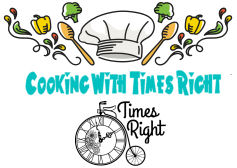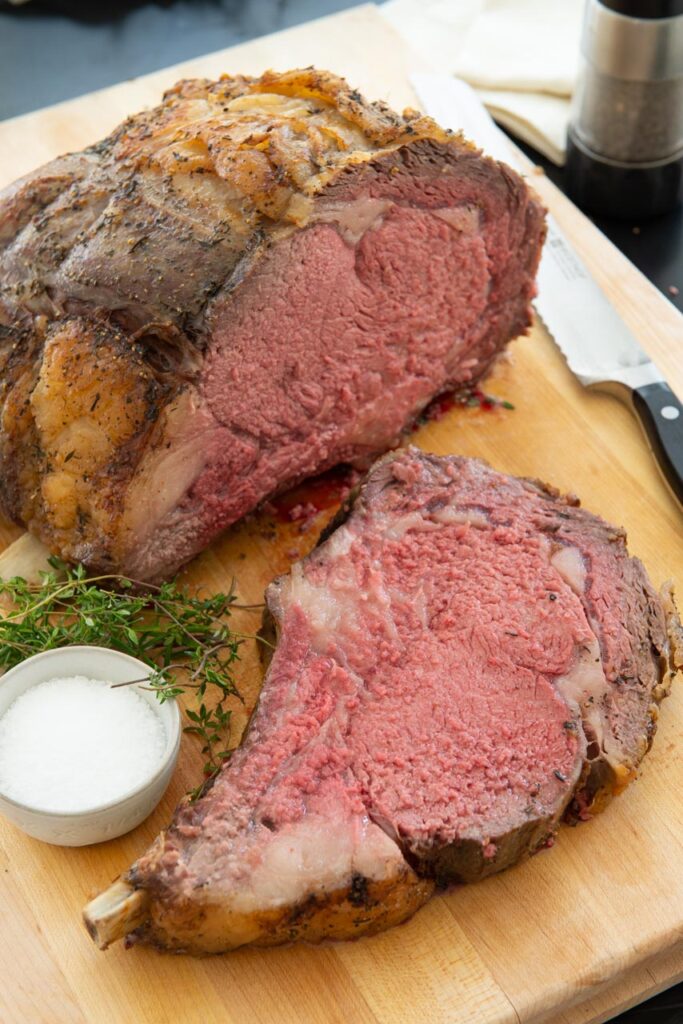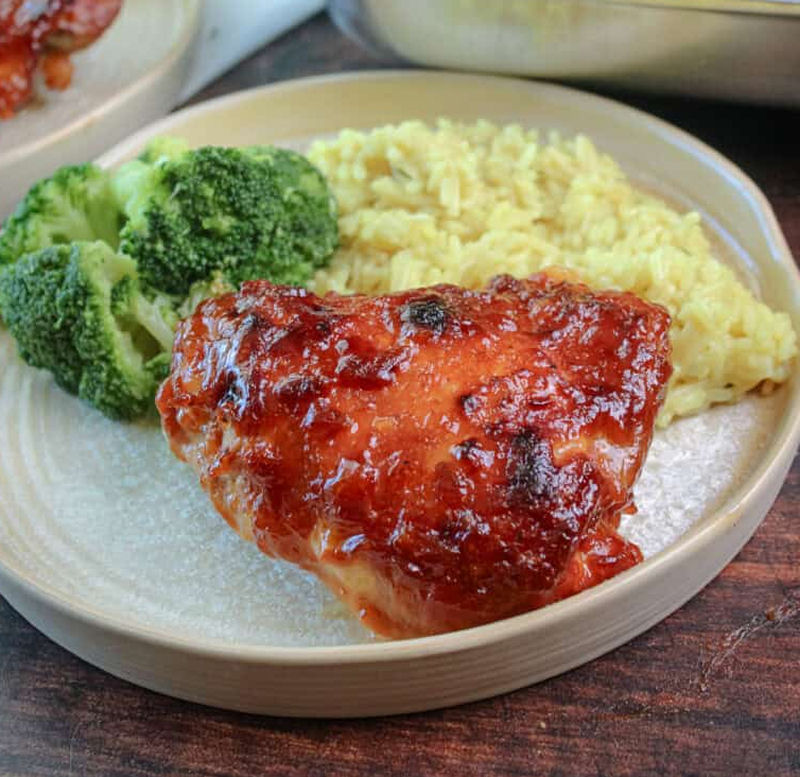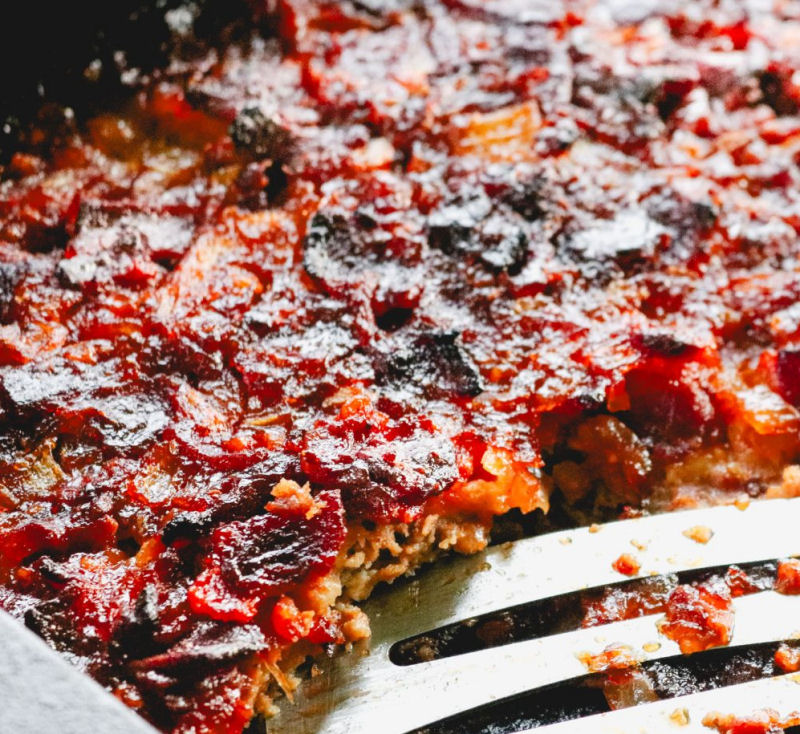Reverse Sear Prime Rib is the absolute best way to cook this gloriously delicious beef roast, with an evenly warmed interior and a browned flavorful crust. The secret is the reverse sear method, where we cook the beef low and slow, let it rest, then blast it with high heat at the end to brown the exterior.
Salt the Meat One Day Ahead, if possible
Dry-brining the prime rib the day before roasting means every bite is flavorful, and slow-roasting at a low temperature followed by a high-heat sear ensures a delicious medium-rare doneness throughout with a savory herb crust.
For best results you’ll want to start a day ahead by salting the roast and letting it sit in the fridge for 24 hours with a maximum of 48 hours.
Set a wire rack inside a rimmed half sheet pan, and season a 10-lb bone-in standing rib roast with plenty of kosher salt. Rub and press the salt into the meat. The salt will have a chance to penetrate the beef and “season on the inside” to a degree, and it will also pull moisture out. Additionally, by NOT covering the beef in the fridge, this allows the exterior moisture to dry out as much as possible, which encourages browning later on.
Start Warming Up the Beef
Two hours before cooking, remove your bone-in roast from the fridge and let it stand at room temperature. This will give you the juiciest meat possible, because you’ll need to cook it less.
Blot Excess Moisture with a Paper Towel
After sitting at room temperature, dry the exterior well with a paper towel.
I always do this with my meat, particularly red meat like beef. This encourages browning, and you can see that there’s enough moisture on the outside that it moistens a full piece of paper towel.
Ghee Is The Best Choice for Rubbing The Exterior
I mix ghee into the rosemary, thyme, and black pepper, then rub it all over the rib roast. Ghee has a neutral flavor, a very high smoke point, and a great consistency for slathering on the meat and holding all the seasoning evenly in place. Butter and olive oil cannot handle the heat as well.
The seasonings rubbed on are not so much that it becomes a crust, but just enough for flavoring the beef.
Cook Low and Slow
Place the prime rib in a low temperature 250F oven for several hours, with the fat cap facing up, until it hits an interior temperature of 120F, as measured with a meat thermometer. There’s some browning on the outsides, but not a ton. We’re going to need some much hotter direct heat for that, at a much higher oven temperature. But not yet! It’s time to let the roast rest for a bit.
Rest the Beef Now, Not At the End
It’s most common to let meat rest at the very end of cooking, before serving, but here we’re going to do something better. Resting the beef now means we can slice and serve the beef later immediately out of the oven, when the exterior is piping hot, sizzling, and browned.
I rest my bone in prime rib for about 45 minutes, which gives me enough time to get the heat cranked up to 500F for the next stage. But, you can rest anywhere from 30-60 minutes.
There is no need to cover the entire roast with aluminum foil, since we’ll be heating it again right before serving.
Right Before Serving, Blast the Roast with High Heat to Brown It
After the rest period, blast the prime rib in a very hot oven for 5 to 10 minutes until it’s thoroughly browned on the outside. Don’t go much longer than 10 minutes though, as you’ll start to cook the interior more and increase the doneness.
Stand at the oven door and turn the light on so you can keep your eye on the browning. You’ll notice the outside sputtering a bit like cooking bacon in a skillet, and you may notice some smokiness too.
Serve Immediately After Browning (No Need to Rest Again)
After this quick browning, you can slice and serve the prime rib right away, which is AWESOME because it’ll still be warm inside, and hot, crisp and crusty on the outside.
Reverse Sear Prime Rib
Description
Reverse Sear Prime Rib is the absolute best way to cook this gloriously delicious beef roast, with an evenly warmed interior and a browned flavorful crust. The secret is the reverse sear method, where we cook the beef low and slow, let it rest, then blast it with high heat at the end to brown the exterior.
Prime rib is such an expensive cut of meat, that you really don’t want to mess it up. If you follow this recipe, you will be rewarded with great results, and the perfect prime rib.
In this method, we are maximizing internal tenderness and doneness consistency, maximizing external browning, and choosing simple compatible accent flavors that don’t steal the show.
Ingredients
Instructions
-
Prepare Rib Roast
One day ahead of time, place a wire rack inside a rimmed half sheet pan. Rub the rib roast all over with the salt, then place on the wire rack. Refrigerate for one day, completely uncovered. You can do this two days in advance if you prefer. -
Let Stand At Room Temperature
Two hours before cooking, remove the prime rib from the fridge, and let it stand at room temperature. -
Preheat Oven
Preheat the oven to 250F. -
Mix Rub and Rub On Rib Roast
In a small bowl, mix together the ghee, rosemary, thyme, and black pepper. Rub all over the rib roast, then place the beef with the bones underneath. -
Cook In Oven
Cook the beef in the oven for about 3.5 to 3.75 hours, until the interior measures 120F, which will give you a medium rare interior after carryover cooking. I usually hit 120F at exactly 3.75 hours, but check earlier if you are unsure if your oven is accurate. (For rare, pull at 115F, about 3.5 hours, and for medium, pull at 125F, just under 4 hours). -
Remove From Oven and Let Stand
Remove the beef from the oven and let it stand at room temperature for at least 30 minutes, and a max of 60 minutes. No need to cover with aluminum foil.
-
Return To Heated Oven
Increase the oven temperature to as high as it will go, ideally 550F, but 500 is okay. Additionally, if you have a convection roast (or convection bake) feature, turn that on as well. When the oven is fully heated, return the rested beef to the oven for between 5 and 10 minutes, until thoroughly browned on the outside. In my oven at 550F with convection roast, 5 minutes is plenty to brown the exterior. I recommend turning the oven light on and watching it closely as it cooks. Do not brown for more than 10 minutes, or you'll start to increase the doneness on the interior. -
Serve and Enjoy
The prime rib is now ready to slice and serve right away. There is no need to rest again. If desired, you can remove the bones before slicing by cutting right alongside them. I personally like to serve the pieces bone-in on the plate. Enjoy!





